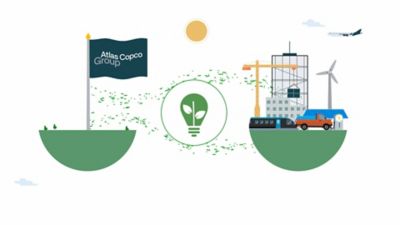Welcome to the Storyselling session
In the Atlas Copco Group we will become an organization of great storytellers and this is where it starts. Follow the steps below to play the game and create stories. You can play the game in two ways, either gather physically or meet your colleagues online via MS Teams.
All stories can be retrieved after the game. After submitting your story it will be in the story bank hosted by Corporate Communication. If you need assistance or guidance, contact Anna-Karin Rabe in Corporate Communications.
Material for online game session
- Introduction PPT for online storyselling game October 2020 85.2 MB, PPTX
- Storyselling interactive game 2020 3.5 MB, PDF
- Game master instructions - online session 37.3 kB, DOCX
Material for physical game session
- Order your games via Print Shop - PMI number 8993 0000 76 to play
- Use the Introduction PPT for the physical game session
- The game master instructions are for the game master to prepare
- Introduction PPT for storyselling game - physical session 57.1 MB, PPTX
- Game master instructions - physical session 35.8 kB, DOCX
Play the game and complete the story plan
Click the image on the left or go here to fill in your story in the online template. After submitting your story it will be in the story bank hosted by Corporate Communication. Kindly e-mail [email protected] and you can access the story. Have images that go with your story? They can be uploaded with the story.
Reference material
- Story example 444.5 kB, PDF
Storyselling video
FAQ
Can this be used by brands other than Atlas Copco? Yes this game is designed for all of the brands within the Atlas Copco Group.
What is the expected outcome from the story? We would like to use the stories to help bring Atlas Copco - Home of industrial ideas to life!Does the story need to be in English? Preferably the story should be in English, but if this is not possible local language is permitted.
Should the story be made up or based on real-life events? The story should be based on real life events.
Can I get access to the story afterwards? Yes, you can speak to your game master about getting access.
What is a note taker? The notetaker will be the one that completes the storyplan.
What is storytelling? Storytelling has been around since ancient history. We have told stories around fire places, e.g. to warn about dangers or to explain important matters in a way that people remember them. It is a powerful way of building engagement and keeping your audience’s interest. It's a way of sharing ideas, behaviors and experiences.
Good stories connect with people emotionally, they make people relate, feel and understand. A story with a good narrative makes a connection to why others should care about what you have to tell. It’s not enough with merely raw data and facts. Context and emotional touch can completely change the perception of an item!
What are the benefits of storytelling?
• Stories help to build empathy.
• Stories make people feel, and when we feel things, we remember them.
• Stories spark imagination and can generate new ideas. This will add value to the business and the brand.
• Stories bring pains and pleasures of using e.g. products to life. This can make products or services far more engaging than what a list of features would do. The values and stories that certain products or services bring, can also help motivate teams and developers as to why they're building a product. Just imagine life without their products or services...
• Stories can help you explain difficult concepts. By providing more context to a situation, the audience can connect with a concept and to understand.
• It gives you the ability to create captivating speeches and presentations, successful social media campaigns, and make films that will have real impact on people – and on sales. They can be implemented everywhere, blogs, whitepapers, in your about us section online etc.
How do I tell my story in a compelling and captivating way?
• Craft your story with the help of the story plan in the attached PDF. Think about the purpose of your story and what you want your audience to feel when they listen to you. Build your story around that emotion!
• Effective stories speak the language of the audience, are rooted in data, and take advantage of compelling artifacts. Adapt your vocabulary to your audience (the ones listening to your story).
• Use real life experiences rather than fictional stories. Be transparent and genuine.




